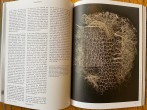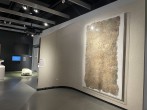

#1
Plantrootweaving tapestry 180cm x 300cm
“Gene Cultures” MIT Museum Cambridge, Massachusetts, USA
2nd October 2022 ongoing


#1


#2
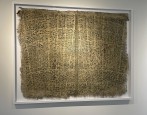

#3


#4
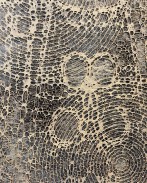

#5
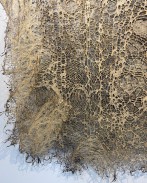

#6
Solo exhibition Wonderground
24 September 2022 -8 January 2023 Roof -A Rotterdam
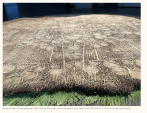

#1
Growing Sculptures: Interview with Diana Scherer
by Anna Roos van Wijngaarden
One of the pioneers in biotech art is Diana Scherer, a German researcher and sculptor who lived in Amsterdam for over 20 years. At the core of her botanical installations, textiles and photography lies a great admiration for and curiosity about what neurobiologists call “the brain of plants.” The artist studies plants and root systems so as to control their “natural” growth processes. In her studio she creates artificial biotopes to grow her root art using soil, seeds, light and subterranean templates from both natural and man-made patterns. The roots follow these patterns and from there on, the work grows itself.
Her latest commission for the 23rd Biennale of Sydney, ‘Entanglement’ (2022), explores xylem vessels, the critical tissue responsible for transportation of water through plants. We talked to Scherer about her slow “collaboration with nature” and how it intersects with science, ecology, and sculpture.
https://www.berlinartlink.com/2022/08/29/growing-sculptures-interview-with-diana-scherer/
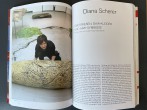

#1
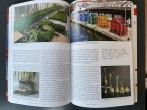

#2
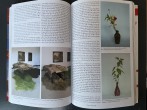

#3
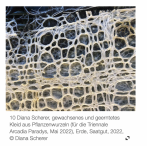

#4
About Giants, Gaia Dresses and Anti-Symbiosis
A conversation by Herbert Kopp-Oberstebrink
The art of Diana Scherer (*1971) makes the invisible visible and in the process reverses the grown orders of above and below. For example, she shows roots resting on a bale of earth at the top, while blades of grass lie at the bottom. Initially, she is intensively concerned with the material aspects of art. Over the last ten years, her preferred materials have been various types of grass, mostly oats, maize or wheat, earth, water and plastics. With the help of science, Scherer researches the growth and growing conditions of grasses and cultivates them in greenhouses. Cultivation – in its old sense of cultivation and care – does not mean allowing, but rather disciplining and shaping. Scherer also demonstrates this and thus takes us back to the beginning of human culture and civilisation. But what has grown naturally and cultivated is only one domain of her art. She goes one step further and reminds us that our dissecting-curious gaze presupposes a rupture, a damage, be it of the grown form (grass field), be it of the cultural form (vases) – a killing of the natural. Scherer’s artistic practice follows an aesthetic of interaction, and this in several respects: the interaction of natural growth processes and human interventions, of natural and culturally shaped materials, of natural forms and art forms, of art and scientific material research, botanical expertise, horticultural practice.
The elements of this interaction enter into tense relationships that communicate themselves to the viewer in disparate artistic formations of fragile beauty. Scherer’s works are thus characterised by the combination of the delicacy of green grasses and fine roots with the coarseness of artificially generated stencils, by the interplay of shaping and shattering as well as by the simultaneity of a sober scientific-prosaic gaze and poetic imagination. Her artistic beginnings lie in photography. She studied art at the Gerrit Rietveld Academie in Amsterdam, where she also lives and works. In 2022 Diana Scherer will be a participant in the 23rd Biennale of Sydney.
https://www.kunstforum.de/artikel/diana-scherer/It’s our F***ing Backyard - Material Futures - Stedelijk Museum Amsterdam 26 mei – 4 september 2022
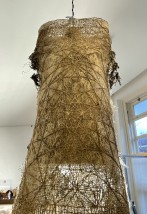

#1
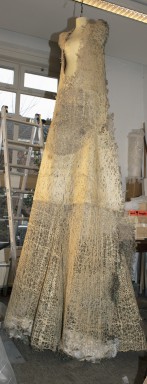

#2
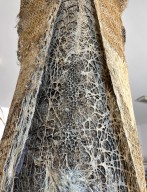

#3
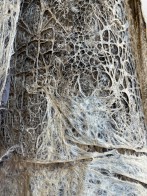

#4
Oranjewoud – Arcadia May 2022 - Curator Hans den Hartog Jager
With Marianna Simnett (1986, Great Britain), Charles Avery (1973, Scotland), Mercedes Azpilicueta (1981, Argentina), Diana Scherer (1979, Germany) and Erik van Lieshout (1968, The Netherlands).


